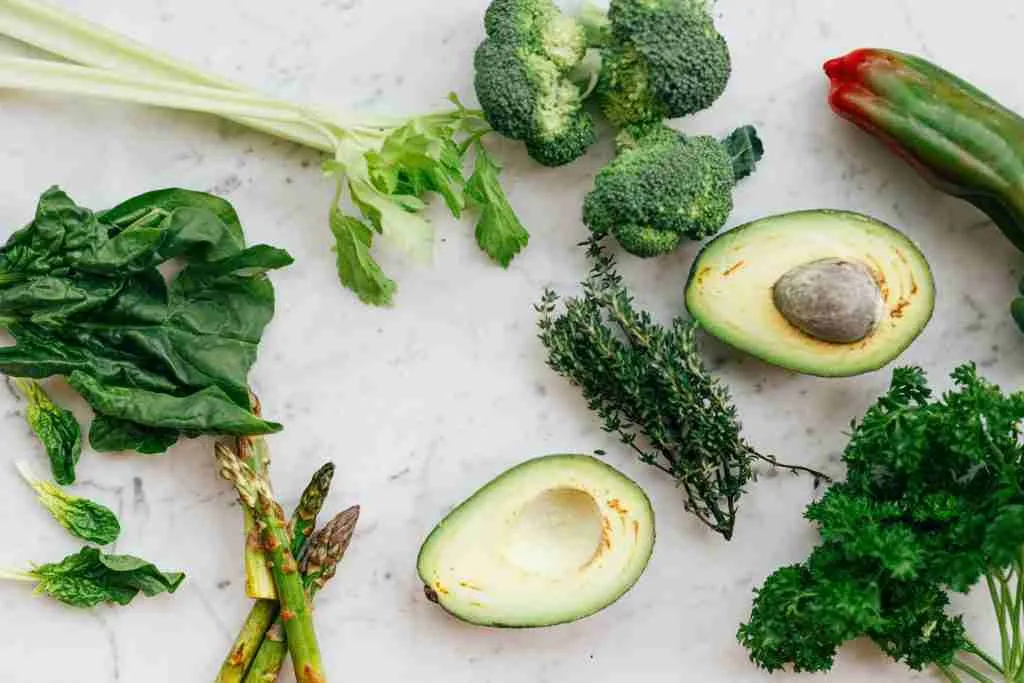
Keto Diet | Daily Limit | Calculate Net Carbs | Good | Bad Carbs
Low-carb diets have long been popular weight loss tools. However, one among them stands out because of its health benefits. The keto diet is a well-known method of reducing blood sugar, insulin, and body weight to prevent disease.
The ketogenic diet is different. It focuses on the consumption of healthy fats, such as coconut oil. Still, the daily carb limit is crucial to make it work.
Figuring out how many carbs you can eat daily on keto is difficult.
Factors affecting the carbohydrate limit include body weight, height, fat percentage, and basal metabolic rate.
Keto nutrition, especially the carb intake, seems challenging when you start, but I help you overcome this stumbling block.
This article explains how many carbs you can eat daily to stay in ketosis.
How Many Carbs to Eat on Keto?
The keto diet is a low-carbohydrate, high-fat (LCHF) diet.
A ketogenic diet reduces carbohydrates and maximizes healthy fats while keeping protein consumption moderate.
The ketogenic diet aims to burn fat as the primary source of energy. In doing so, the liver produces so-called ketone bodies from stored fat.
This natural metabolic state of ketosis can only be achieved if you eat a few carbohydrates.
Daily calories mean at least 60% fat, 30% protein, and 10% carbohydrate (Masood et al. 20221).
Macronutrient distributions of 75% fat, 20% protein, and 5% carbohydrate are also within the typical range of a ketogenic diet.
Daily Carb Limit for Keto
Keto beginners should aim for less than 20 grams of carbohydrates per day.
Depending on the body’s constitution, the daily limit is between 20 and 50 grams of carbohydrates to stay in ketosis.
For people who want to lose weight or suffer from metabolic problems such as insulin resistance, the recommended limit is 20 grams of carbohydrates per day.
This is especially effective in preventing type 2 diabetes and lowering the risk of heart disease.
However, not all carbohydrates are created equal. Some carbohydrates don’t factor into our upper limit in the first place.
When eating, we must understand which carbohydrates the body can and cannot utilize.
Net Carbs vs. Total Carbs on Keto
While carbohydrates can be found on every package, you must calculate net carbs correctly. Determining net carbs is crucial because only net carbohydrates count toward daily requirements on a ketogenic diet.
Total Carbs
Carbohydrate information on labels includes all carbohydrates. For example, total carbohydrates include table sugar, simple sugars such as glucose, multiple sugars such as starch, sugar alcohols, and dietary fiber.

Dietary Fiber
Dietary fiber is those carbohydrates you can eat in unlimited amounts on a ketogenic diet. They are excreted again and do not count as carbs that need to be limited in keto.
Dietary fiber is a non-digestible or non-utilizable carbohydrate. It does not enter the bloodstream and does not cause an insulin response.
However, if you overeat fiber, it can cause side effects such as constipation.
Net Carbs
Net carbohydrates are carbohydrates that can be utilized. Therefore, they are part of the total carbohydrates that increase blood sugar and insulin levels.
Sugar Alcohols
Sugar alcohols are hydrogenated carbohydrates used as sugar substitutes in processed low-carb products and keto recipes. Here are the most popular sugar alcohols used as sweeteners:
- Erythritol
- Xylitol
- Sorbitol
- Maltitol
- Isomalt
- Lactitol
Like conventional dietary fibers, polyhydric alcohols are not supposed to be digested and do not increase blood glucose. Nevertheless, studies show that the body partially utilizes sugar alcohols (Livesey 20032).
For this reason, they are included in our calculation as half of dietary fiber.
How to Calculate Net Carbs for Keto
Net carbs are total carbohydrates minus fiber.
For this purpose, sugar alcohols count as half fiber if you find any among the nutrient facts. Calculating net carbohydrates is crucial because only this digestible part significantly influences metabolism.
You mustn’t get confused by the “of which sugar” information. It is not relevant for the calculation of the net carbs.
Good Carbs on a Ketogenic Diet
The ketogenic diet is not limited to beef, pork, chicken, fish, eggs, dairy products, and Bulletproof Coffee. You can eat plenty of plant foods as well.
The best carbohydrates for a ketogenic diet are high-fiber foods. Fiber shrinks net carbs and minimizes blood sugar and insulin spikes (Chandalia et al. 20003).
For example, high-fiber noodles made from konjac root take advantage of this. Shirataki noodles are a popular keto substitute for spaghetti or other noodles.
When it comes to foods for keto, you are always better off preferring vegetables over fruits. Few people realize that fruits contain significantly fewer vitamins and other nutrients than vegetables.
Regarding fruits, few candidates are suitable for a ketogenic diet. These insider tips include strawberries, raspberries, and limes.
However, the best keto fruit is avocados. Although it has carbohydrates, a large amount of fiber makes avocado low-carb. Their healthy fats also help you stay full longer.
The most keto-friendly carbs are green vegetables that grow above ground. And that doesn’t just include leafy greens. Among the best carbs for keto, you’ll find cruciferous vegetables in particular:
- Swiss chard
- Pak Choi
- Chinese cabbage
- Endive
- Spinach
- Radicchio
- Asparagus
- Celery
- Arugula
- Cauliflower
- Savoy cabbage
- Kale
- Broccoli
- Fennel
- White cabbage
- Zucchini

Celery is the best choice among these low-carb veggies, with only 1.4 grams of net carbohydrates (*).
In addition, nuts are prime sources of carbohydrates in keto. They contain fiber, manageable net carbs, and countless healthy fats.
Among the best nuts and seeds for keto are:
- Macadamia nuts
- Pecans
- Brazil nuts
- Walnuts
- Flaxseeds
These all provide under seven grams of net carbs per 100 grams and an exciting spectrum of monounsaturated, polyunsaturated, and saturated fats.
Butter made from keto-friendly nuts can be a healthy snack with manageable carbohydrates. I recommend pure almond butter or organic coconut butter.
Carbohydrates to Avoid
Vegetables that grow underground, such as carrots, potatoes, and sweet potatoes, are usually yellow to orange in color and not suitable for the ketogenic diet.
The reason is that these tubers are starchy vegetables.
Starch is the energy reserve of a plant, like body fat in humans. They contain a lot of carbohydrates, which in turn make us fat.
Starch is a polysaccharide that blocks the body’s ability to break down fat (Meijssen et al. 20014).
Legumes are poor carbs for keto. Not only do they have too many carbohydrates to stay in ketosis, but they also prevent nutrient absorption.
Phytic acid in legumes insolubly binds minerals in the digestive tract, limiting their absorption (Gibson et al. 20105).
Grains and pseudo-grains, such as quinoa, are not ketogenic because of the large amount of carbohydrates.
Whole grains contain anti-nutrients such as phytic acid and lectins, making them a real fattener and problem for people with diabetes (Kamikubo et al. 20086).
Last, avoid fructose foods when eating carbohydrates on a ketogenic diet.
Fructose, not alcohol, is the leading cause of fatty liver disease. The liver converts fructose into fat (triglycerides), which increases blood lipid levels (Ter Horst et al. 20177).
Moreover, this sweet sugar molecule causes cravings (Lustig 20138).
In the course of alcoholic fermentation, fructose is converted into alcohol. Therefore, both substances cause almost the same diseases.
Hence, alcoholic long drinks with juices are not keto. Juices are fructose and glucose that have been separated from the protective fiber.
Few people know that shakes, juices, and smoothies may prevent them from losing weight.
Here’s a list of common carbohydrates to avoid on keto:
- Apples
- Bananas
- Oranges
- Mangos
- Pineapples
- Beans
- Peas
- Chickpeas
- Cashews
- Rice
- Potatoes
- Sweet potatoes
- Bread
- Corn
- Oats
- Pasta
- Bread
- Sugar
- Agave syrup
- Honey
The Takeaway
When you’re just starting keto, carb cravings can feel intense. But this phase will pass once you’re fat-adapted.
Fat-adaption means that your body has become accustomed to burning fat instead of glucose as your primary energy source. In the process, you will lose a few kilograms of water deposits.
During this phase, consuming plenty of water and salt is vital to prevent side effects like the keto flu, fatigue, and headaches.
By replacing the above foods with bad carbs with those well suited for keto, you’ll find it easy to enjoy wholesome, nutrient-dense meals.
Adorning your carbs with healthy fats like cream, olive oil, pastured butter, or cheese will positively affect blood sugar levels.
This little trick will also help you stay full longer and have fewer cravings!
If you measure ketosis regularly, over time, you will better understand how many and which carbs you can eat per day.
Experienced keto enthusiasts like me can eat 50 or even 100 grams of carbs daily without being kicked out of ketosis.
Frequently Asked Questions (FAQ)
Can you lose weight on 50 carbs a day?
You can successfully lose weight by eating only 50 carbs per day.
Is 100 carbs a day keto?
Consuming 100 carbs a day is low-carb, but not keto.
What are the basic rules for keto?
The basic rules for keto state that you should get 60-80% of your energy from healthy fats, 15-30% from protein, and only 5-10% from carbs.
Should I have 20 or 30 carbs on keto?
With 20 carbs per day, you are safe to maintain ketosis.
Mag. Stephan Lederer, MSc. is an author and blogger from Austria who writes in-depth content about health and nutrition. His book series on Interval Fasting landed #1 on the bestseller list in the German Amazon marketplace in 15 categories.
Stephan is a true man of science, having earned multiple diplomas and master's degrees in various fields. He has made it his mission to bridge the gap between conventional wisdom and scientific knowledge. He precisely reviews the content and sources of this blog for currency and accuracy.
Click on the links above to visit his author and about me pages.

